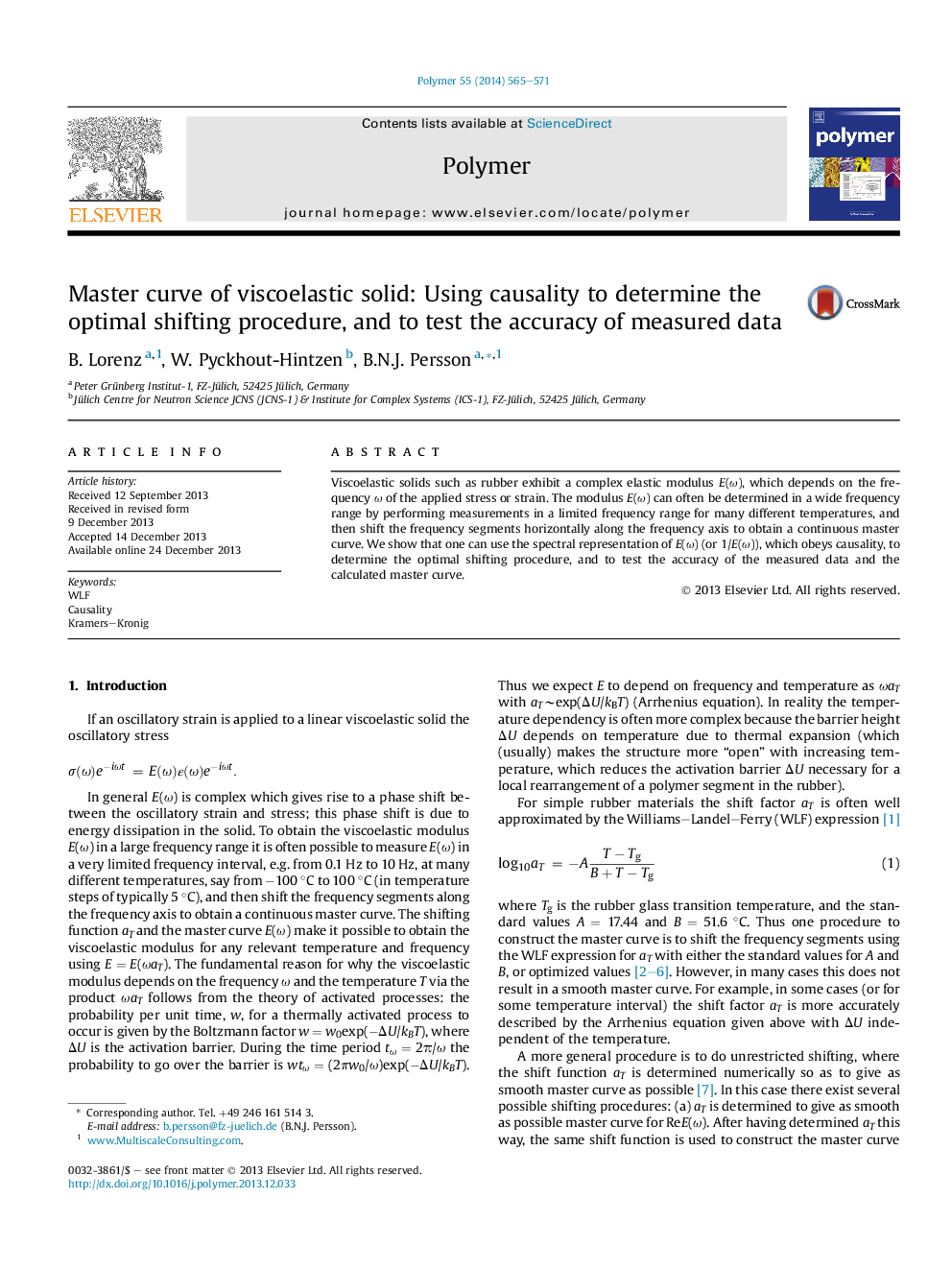| Article ID | Journal | Published Year | Pages | File Type |
|---|---|---|---|---|
| 5181847 | Polymer | 2014 | 7 Pages |
Abstract
Viscoelastic solids such as rubber exhibit a complex elastic modulus E(Ï), which depends on the frequency Ï of the applied stress or strain. The modulus E(Ï) can often be determined in a wide frequency range by performing measurements in a limited frequency range for many different temperatures, and then shift the frequency segments horizontally along the frequency axis to obtain a continuous master curve. We show that one can use the spectral representation of E(Ï) (or 1/E(Ï)), which obeys causality, to determine the optimal shifting procedure, and to test the accuracy of the measured data and the calculated master curve.
Graphical abstractDownload full-size image
Keywords
Related Topics
Physical Sciences and Engineering
Chemistry
Organic Chemistry
Authors
B. Lorenz, W. Pyckhout-Hintzen, B.N.J. Persson,
